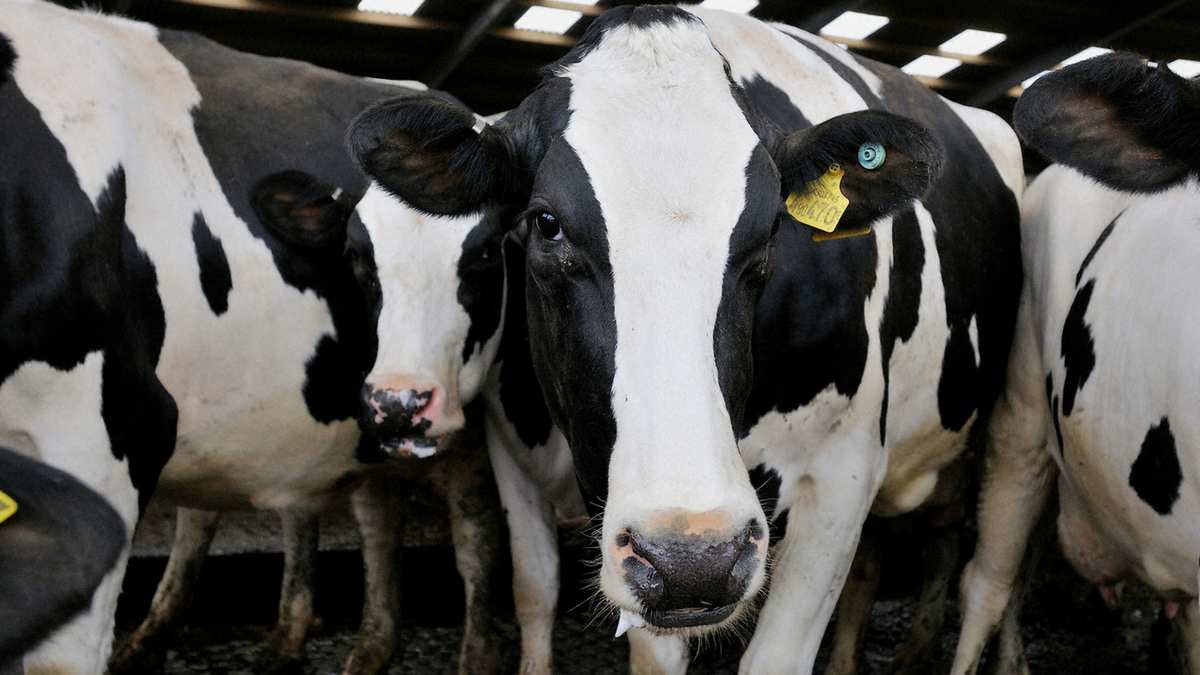The following is an edited transcript of Tom Martin’s interview with Dr. Jud Chalkley, a practicing physician with St. Joseph Hospital KentuckyOne Health in Lexington, Kentucky.
Tom: To suggest that there is disruption in the healthcare market is an understatement these days. Joining us is Dr. Jud Chalkley, a practicing physician with St. Joseph Hospital KentuckyOne Health in Lexington, Kentucky. We thank you so much for joining us.
Jud: Thank you for having me.
Tom: Dr. Chalkley, you talk about disruption in the medical hierarchy. What do you mean by that?
Jud: I think as we look around and see what’s going on in the healthcare industry in the United States, we see a big chaotic mess.
Last year, we spent $3.2 trillion on healthcare in the United States. About 10 percent of it went to primary care, which is the area that I’m going to be talking about at ONE: The Alltech Ideas Conference. I think we all saw the animosity, the lack of understanding, the infighting and the politics of the Obamacare legislation. And now, we see it again in the Trump legislation. So, I’m not picking on either political party in this discussion, but looking at alternative ways to provide care in a much more dignified way for the patient.
In Mexico at SuKarne — a beef manufacturer — I learned of a healthcare network called Salud Digna, which is Spanish for “healthcare with dignity.” I think we need to restore that in American healthcare. I also think we need to restore the idea of the doctor-patient relationship where your doctor is your friend and your confidante — not just somebody who’s filling out forms, typing away on his iPad and spending an inordinate amount of time in electronic medicine rather than real medicine while taking care of a patient.
There was a study in the Journal of the American Medical Association (JAMA) from December of 2015 where they followed the interns at Johns Hopkins Hospital in Baltimore. They discovered that, as they followed them through their entire week, they spent 1 percent of their time eating and going to the restroom. They spent 7 percent of their time actually in contact with a patient and 43 percent of their time with the computer.
Tom: Let’s talk about Salud Digna. What about Salud Digna do you consider to be a model for healthcare?
Jud: The gentleman who owns SuKarne had a son who was very, very sick. He tried to get his son scheduled for diagnostic testing, and the wait was five months. Fortunately, he had the money necessary to bypass the system, but he thought, “Wait a minute. What’s everybody else going to do? Could I help them?” So, as a philanthropic effort, he started this healthcare delivery system. Fourteen years ago, when his son got sick, there were no resources. This program benefited 6.5 million patients in 2016.
He started by focusing on the things he could impact. He focused on imaging, radiology, laboratory and eyeglasses. He provides eyeglasses for $20, and the bifocals, like I have, would cost $30. I visited their glasses factory, and it would be considered state-of-the-art even for Sydney, Australia, or New York City or Los Angeles. Their laboratory has polymerase chain reaction (PCR) machines so that they can do the most recent state-of-the-art testing for a laboratory in microbiology. And their imaging is second to none. They have the same imaging that we have. In fact, they even have some nicer facilities in mammography. They have complete suites with mood music and visualization areas for the women because this can be a very painful procedure for women. A mammogram is $15. A chest x-ray is $15. An EKG is $10. The most expensive test they have is a CT (or CAT) scan, which is $140. It’s performed with a spiral scanner, which is state-of-the-art anywhere in the world.
Tom: I was at a recent conference of medical professionals in Washington, D.C., and the buzz was about how we get the costs of healthcare down in this country. And the numbers you’ve just been citing to me are pretty remarkable. How do they do that?
Jud: In SuKarne’s case, it is revenue-neutral now, and that was the goal. The owner of SuKarne partnered with General Electric, Fuji and several other major corporations to get the initial hardware and, subsequently, some of the software. Then, they found price points that allowed them to still pay their employees, provide reasonable salaries for radiologists, obstetricians — for the people who were involved in the system, so that they could keep them in the system without overcharging the patient. There was no profit incentive in the SuKarne model. They got their cost down to about a tenth of what we would pay for the same things here in the United States.
I reviewed another healthcare model that exemplified “salud digna.” Its mantra is the English translation of salud digna, “healthcare with dignity.” It’s called Atlas Medical and was started by Dr. Josh Umbehr in Wichita, Kansas. It’s a direct-care model, and, basically, you pay him $50 a month for your primary care. If you need an EKG, stitches, a routine physical, if you develop a cough or sore throat — whatever — you just go in and see him. The normal overhead for a physician in the United States is about 50–60 percent. His overhead is 30 percent. Most of his overhead is the cost of medicine because he’s taken the pharmaceutical industry out of the equation — you get your medicine directly from him. A treatment round of penicillin is about $3. A treatment course of antibiotics is $10 or less. They dispense the medication right there during your appointment.
Let’s say you have a sore throat: You call the doctor and get an appointment. Then you get to the doctor and see the receptionist to fill out all the forms. Somebody looks at your throat, maybe not even the doctor, maybe it’s the physician assistant — which is fine because physician extenders are an integral part of medicine at this time. You may get the strep screen. You get a prescription for the antibiotic, if that’s appropriate, and then you take it to the pharmacy and get it filled. You spend a good deal of time in the process, and it’s much more difficult as you get older or if you’re caring for aging parents. Or, let’s say your parents are entering a nursing home. It’s a very difficult undertaking.
With Dr. Umbehr’s model, you call him up. You text him a picture of your throat. He says, “Run by the office and get a strep screen, and if it’s positive, we’ll put you on antibiotics.” You get the antibiotics at the office for less than a couple of dollars. I think the strep screen in his office is $1.43. The appropriate antibiotics are about $4. So, for less than $5, you’ve walked away with appropriate treatment and a good level of care.
The other convenience is that you can call him anytime, 24/7. The maximum number of patients that each primary care doctor has in Atlas Medical is 600, as opposed to 3,000 patients that the primary care physician normally has. They guarantee that you can have up to 30 minutes of their time at any 24-hour period during the day. So, it just makes your doctor accessible. You know exactly what the costs are. You pay $50 a month. Just multiply that times 12 to get whatever it is. Thirty percent of that is overhead. The rest of it is profit. And that profit is paying for his salary, which is about $200,000 a year — more than the average family practice doctor makes, which in that part of the country is about $150,000 a year.
So, everything is very transparent. It’s very open and patient-centered.
There are some other advantages to this, too: Let’s say you’re too sick to go to the doctor, so he comes to you and makes a house call. Well, what about things like stroke or heart attack and you have to go to the hospital? Or your wife is pregnant, or you’re pregnant? What do you do in those situations? Well, you buy insurance on top of this, but you buy it for catastrophic or more substantive, more serious medical problems. So, if you’re pregnant, you go to the obstetrician and the obstetrician manages your pregnancy and delivery, and then Dr. Umbehr takes over your care again at that time.
The way the Kansas system is set up, it costs you about a total of $200 a month per capita for health insurance. So, $150 of that is going to the insurance company and $50 of it is going to Dr. Umbehr. The average per capita around the country is over $600. So you see, there’s a $400 savings per person right there in primary care, which is about 10 percent of the overall medical expense in the United States.
Tom: Okay. Absorbing all this and thinking about our present national system, if this is ideal, why isn’t this what we’re doing?
Jud: I don’t know. It sounds too good to be true, but it is for real and it works. It’s working very well in Wichita, Kansas. In fact, it’s working so well that some specialty care centers in the Wichita area are adopting a similar direct upfront payment system so that there’s no insurance company, there’s no third party to reject going to the doctor or reject this or reject that. You just go to the doctor and get most problems taken care of and then referred on, if need be, from there. There are some dermatological, orthopedic and cardiology practices that are doing a similar thing as Dr. Umbehr in Wichita. They’ve also negotiated rates down so that they can provide specialty care when needed at a reduced cost.
Another interesting thing is they’re being creative. They’re people on the ground trying to figure it out. They’re not beholden to some huge bureaucracy telling them what to do. For example, when they were figuring out how to handle chest x-rays and they considered their options: “Should we buy an x-ray machine for our office? Then we have to lead line the office. It’s going to be cost-prohibitive. So, what should we do?” Well, they talked to the orthopedic surgeons next door and said, “Hey, can you take our chest x-rays for us?"
They said, “Sure.”
So, a chest x-ray from Dr. Umbehr is $25. For SuKarne in Western Mexico, it’s $15. You can’t get a chest x-ray for under $150 anywhere else in the U.S. that I know of.
Tom: What about pharmaceuticals? You mentioned that, basically, they’re cutting out the middleman.
Jud: There’s a reason there’s a Rite Aid, CVS or a Walgreens on practically every corner. They make a lot of money.
Tom: They do, but those are profound savings we’re talking about.
Jud: Yes. They are.
Tom: So, the markup, is that incredible on the retail side?
Jud: Yes.
Tom: I’m dumbfounded, because it seems to me as though we’re just scouring this country for this very idea. Has this concept been presented on a national level? Has it been forwarded to—
Jud: It’s gaining an audience.
Tom: …policymakers?
Jud: Dr. Umbehr has been on “The Sean Hannity Show.” His model, Atlas Medical, has been featured in the Wall Street Journal.
Tom: Is it such that it could be compatible with what we have in place already, the Affordable Care Act? Could it be integrated with the Affordable Care Act, or would that have to be completely dismantled and replaced with this kind of system?
Jud: I thought a lot about that. With both the Trump proposal, which is over 10,000 pages — and I don’t pretend to understand or to have read all of it — and with Obamacare — which I don’t pretend to have read or understand either — I’m not taking sides on this political issue. I think with either one — either a federally funded or private insurance, or simply an out-of-pocket payment — the Atlas model and the SuKarne model both work extremely well. With the Atlas model, if someone couldn’t pay, either the government or the insurance company — however they wanted to do it — could pay the $50, and they could integrate into the system. If the person just didn’t want to have the coverage, then they pay out-of-pocket when they need care. The same with the SuKarne model. You just know upfront what you’re going to get and what the costs are.
Tom: Well, thank you for laying that out. I think that a lot of people are going to be really interested in hearing about that model, and perhaps another time we can talk about it at more length. I want to make sure that we touch on a few other things in this conversation. One of them being our physician resources. Do we have enough doctors in rural areas in particular?
Jud: According to the American Medical Association, by the year 2020, we’re going to be about 100,000 doctors short nationwide — and most of the shortage is in rural primary care.
Tom: And why is that?
Jud: I don’t, again, pretend to have all the answers. The cost of medical education is astounding right now. The average medical student finishes with $150,000 in debt. The average medical resident, by the time he’s finished his training, is over $250,000 in debt total. That really affects your decision-making process when you’re 30 years old and you’re a quarter of a million dollars in debt and you haven’t earned a penny. It’s kind of a difficult situation.
I think we’ve got to get more people interested in becoming doctors and we’ve got to better utilize our physician extenders, our nurse practitioners and our physician’s assistants in meaningful ways that they can provide good care for our patients.
Tom: What significant technology innovations on the delivery side or on the regulatory side do you think could transform the healthcare scene?
Jud: I think the biggest problem facing doctors right now is the shortage and the burnout. To address the burnout, there’s a recent study that shows that half of the internal medicine board-certified doctors are burned out by age 35. The reason they give is, “This isn’t what I signed up for.” There isn’t a doctor-patient relationship. It’s more a doctor-computer, doctor-insurance company, doctor-administration kind of relationship. So, I think anything that will help restore the doctor-patient relationship — which I think is the primary motivation for most people going into medicine — is one thing that really needs to be done.
One of the things that’s also hurting is the amount of regulation on doctors. We’re so heavily regulated by things that we’re supposed to do, that we have to do and dotting I’s and cross T’s. Some of those things are probably worthwhile and probably began with good intentions, but when you start piling them on and they become requirements of practice and requirements for the insurance company to pay, it becomes very, very onerous.
For example, we changed over to ICD-10, which is a coding mechanism for diagnosis. You now have to code for so many things on ICD-10 that any one mistake could mean no payment, either from the insurance company or from the government. So, you spend so much time with problems like coding that you have to hire somebody to code, to be sure that you get paid, and you find yourself supporting four to six people in an office, which is the average nationwide that a physician supports.
Tom: Dr. Jud Chalkley is with St. Joseph Hospital KentuckyOne Health in Lexington. We thank you so much for being with us.
Dr. Jud Chalkley spoke at ONE: The Alltech Ideas Conference (ONE17). To hear more talks from the conference, sign up for the Alltech Idea Lab. For access, click on the button below.
























